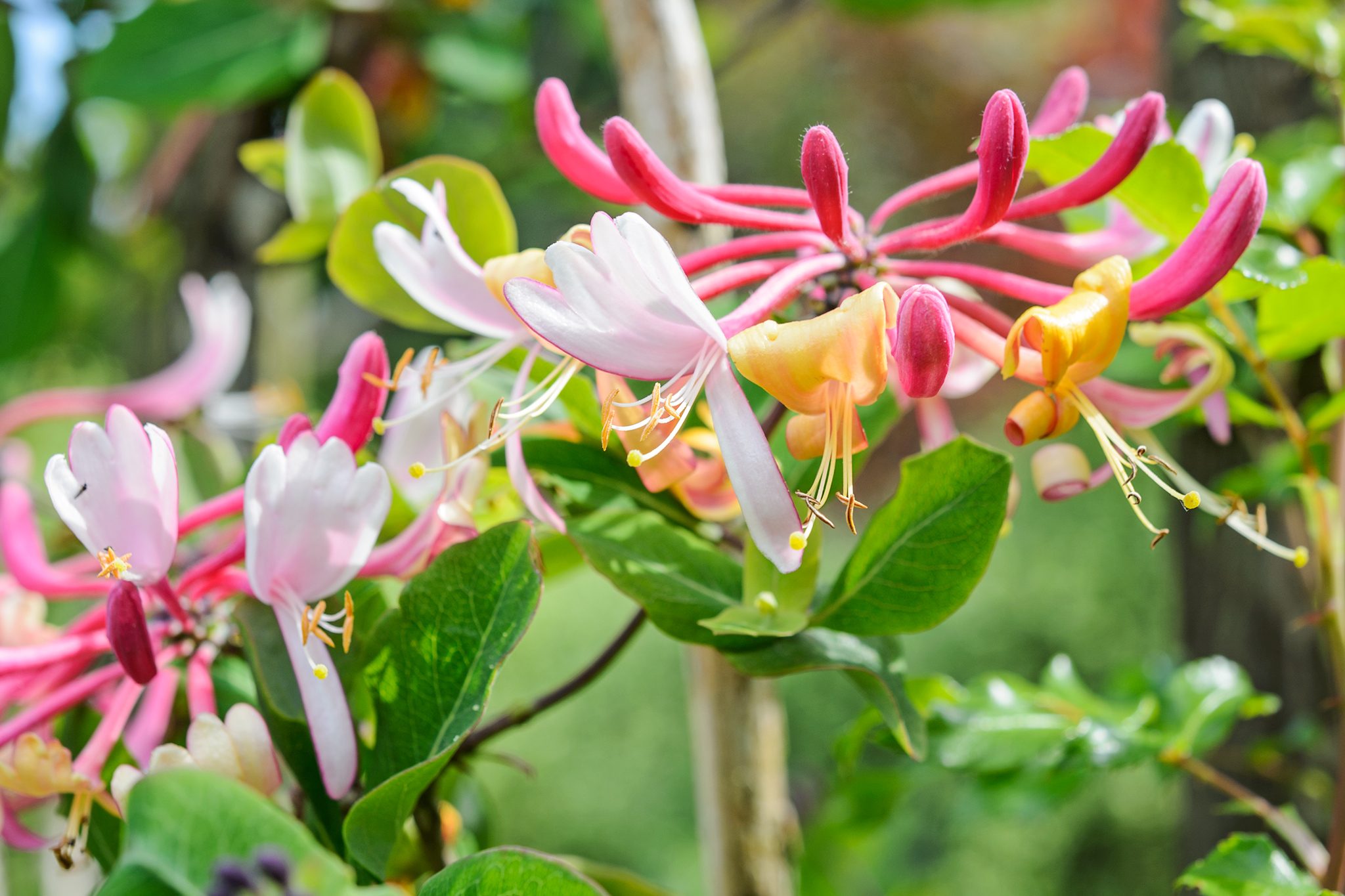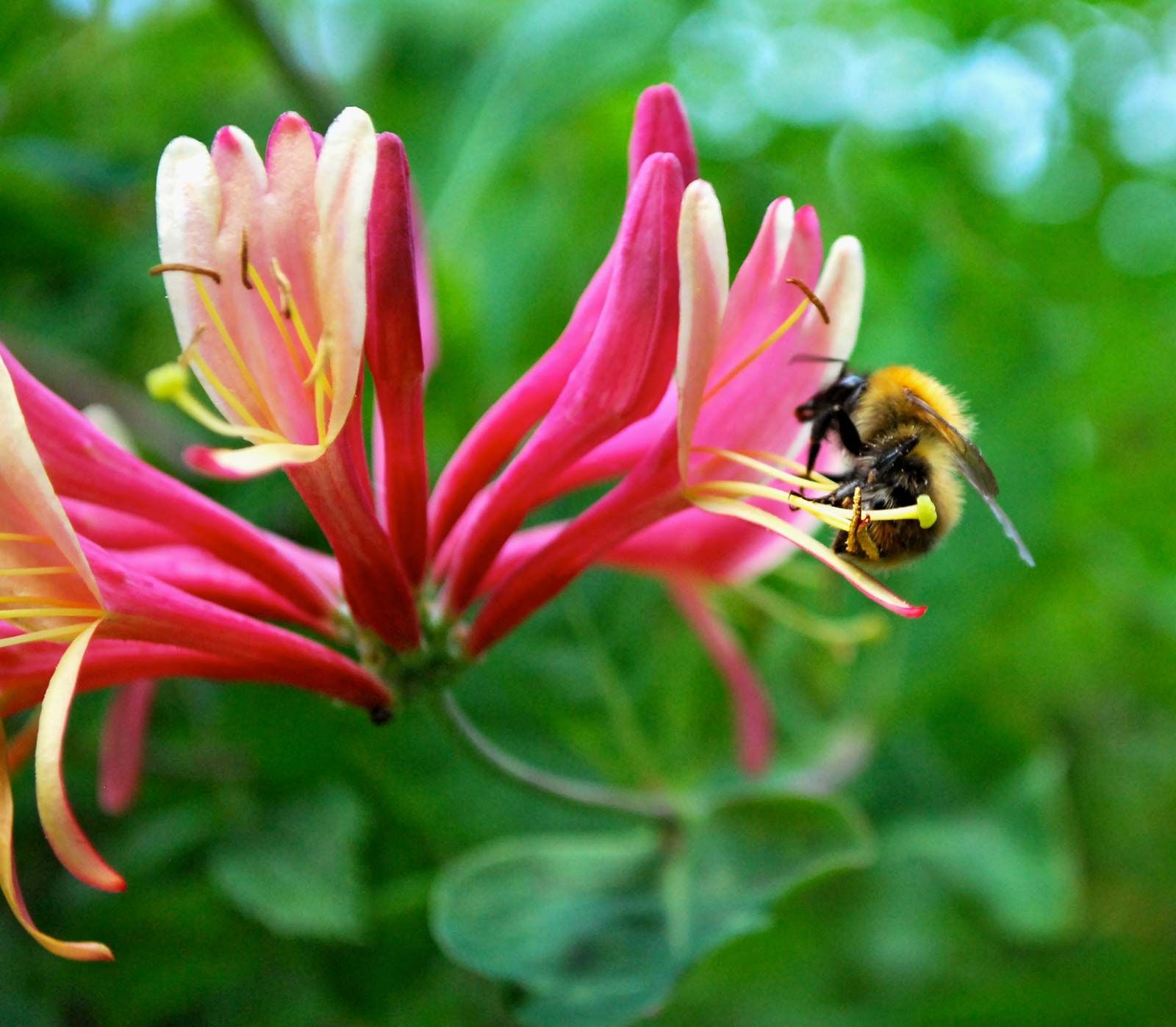The shrub known as honeysuckle is loved by hummingbirds because they enjoy its sweet scent and the sight of it. There are more than 180 different species of this in the world, and 20 are found in North America. There are several varieties, and now we’ll discuss different kinds of honeysuckles. Some varieties are invasive, but that doesn’t mean they aren’t lovely. Some did draw butterflies, while others enjoyed their bloom. Here I’ll describe the most common honeysuckles; some of them are pretty similar, so I’ll include them as one. You may also select them based on the color of the flowers, such as creamy, peach, pink, red, yellow, or white, among others.
Let me first focus on the most crucial aspect of honeysuckles before I discuss the various types of these plants. It needs to be pruned once a year or twice in the spring; otherwise, you can have trouble cutting them down. The vines will be very knotted and numerous. These plants grow quickly, so you will need to put in some effort. Don’t worry about pruning them when they go out of control because they will immediately recover and still look wonderful.
Brief descriptions:
| L. sempervirens (Trumpet honeysuckle) | Non Invasive , Sweet Smell , Attract hummingbirds |
| Japanese honeysuckle vine (L. japonica) | Highly Invasive |
| L. periclymenum (common honeysuckle) | Invasive |
| L. ciliosa (orange trumpet honeysuckle) | Attracts Birds |
| L. ×brownii (scarlet trumpet honeysuckle) | Lightly fragrant |
| Lonicera x ‘Freedom (Freedom Honeysuckle) | No Fragnance, Attract bees, birds. |
Table of Contents
Types of Honeysuckle
These gorgeous vines may grow up to 10 meters in length and grow on fences and doorways. They complement the color and height of their surroundings (29-30 feet). Avoid planting Japanese honeysuckles (L. Japonica), as they can become invasive and take over your gardens, arbors, and fences. You will have to put in more effort when pruning in this situation. Here, I’m focusing on trumpet honeysuckle and Lonicera periclymenum, which are the easiest to cultivate and are classified as non-invasive by the USDA. Trumpet (L. sempervirens) is primarily found in the southeast and grows in USDA zones 4 through 9.
The variation that is offered is as follows:
horned honeysuckle
AVOID DELAY AND CHECK PRICES ON ETSY
If there are shrubs or trees nearby, it is advisable to avoid planting these vines since they grow quickly and strangle neighboring plants and trees. This will also make trimming them more difficult, which is why these vines are also known as woodbine. The honeysuckles should not be cultivated next to any expensive trees or bushes.
2. Honeysuckle Bushes
These varieties are widespread in North America, are considered invasive, and their growth is prohibited in several states. These precise five variations range in height from 7 to 10 feet and have very long, thick green leaves that can sometimes make it difficult for other species to pass by these bushes.
You don’t know if it is legal to grow honeysuckle bushes, therefore we advise you to choose Serviceberry or Red chokecherry instead. These plants won’t harm your yard and will produce lovely blooms that will make you pleased in the end.
Sakhalin honeysuckle is another shrub kind that resembles others extremely closely, and it can withstand cold temperatures just as winter honeysuckle. Their flower flowers are deep in color and they may be found in USDA hardiness zones 3 to 6. It seemed like red blossoming was extremely attractive.
Freedom Honeysuckle is a plant that produces white flowers with no scent and a pink blush on their bloom for those who don’t enjoy the perfume of flowers. Even though there is no odor, they nonetheless draw birds and bees into the area.
3. Dropmore Scarlet Honeysuckle
Lonicera x brownii is the scientific name for this honeysuckle, and it can grow in USDA zones 4,5,6,7,8, and 3 as well. These magnificent flowers, which bloom from spring to fall and have a trumpet-shaped appearance, are incredibly eye-catching and alluring. This one bears red berries that ripen in the fall and attract birds to the vine at the same time. This plant attracts a variety of wildlife, including hummingbirds and butterflies. In either full sun or partial shade, this plant can thrive.
4. Pink Lemonade Honeysuckle
Lonicera x heckrottii is the scientific name for this honeysuckle; another name for it would be goldflame. Similar to the Graham Thomas, this plant blooms from spring to fall, with flowers that are seen to be separated from one another. These vines have a mild aroma and can readily cling to a fence or an arbor. They also draw hummingbirds and butterflies. They can withstand both full sun and partial light or shade; nevertheless, they are difficult to grow in USDA zones 4 and 5, which are warm zones.
5. Graham Thomas Honeysuckle
This Graham Thomas vine grows in USDA hardiness zone 4, and it also produces white blossoms that become yellow as they age. Hummingbirds adore these plants despite the fact that the blooms on them are tuberous and have no perfume. From the end of spring till the end of fall, flowers can be observed. These vines can handle most garden conditions and do well in direct sunlight.


